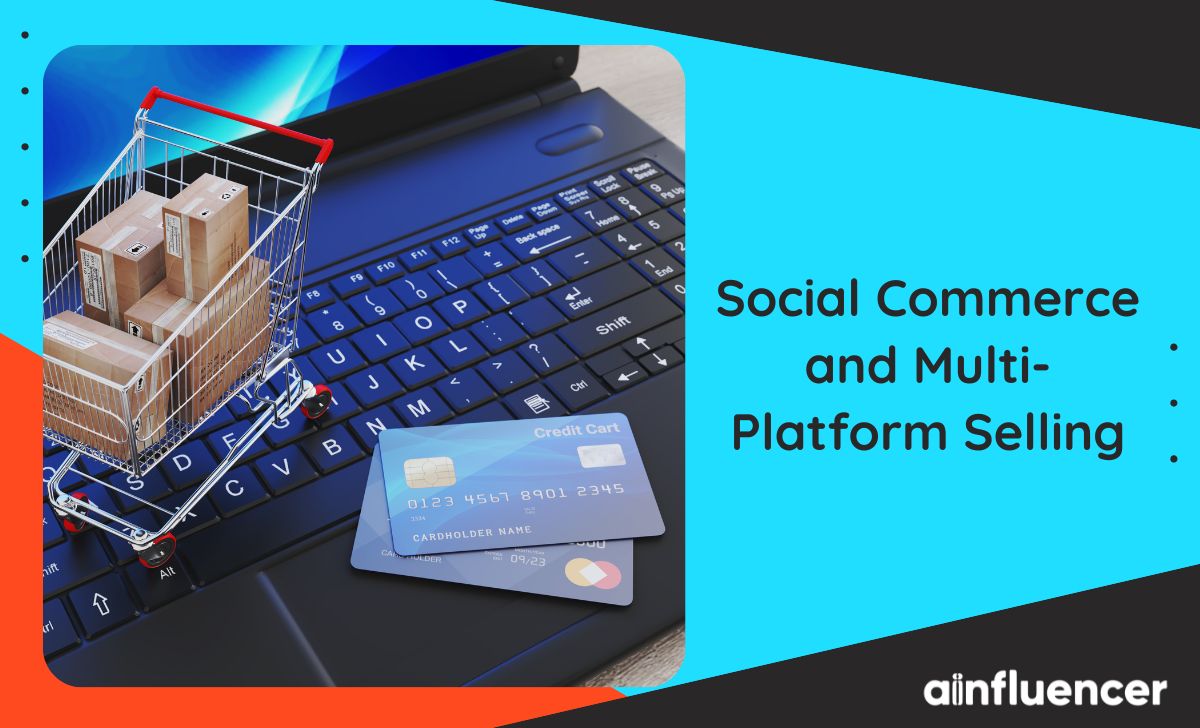Multi-platform selling has changed and fast. It’s not just about listing on a single marketplace anymore. It’s about going where the buyers are, and they’re watching livestreams, browsing reels, and buying through their favourite creators.
From influencers flipping products on TikTok to hobbyists running live auctions on Whatnot, the line between content and social commerce is fading fast.
If you’re a seller, staying ahead in 2025 means being flexible, fast, and everywhere at once.
Let’s explain what’s happening, what tools sellers use, and how to keep up without burning out.
The Rise of Social and Multi-Platform Selling
Five years ago, most online sales happened on traditional marketplaces, eBay, Etsy,and Amazon.
Today? Platforms like TikTok Shop, Instagram Shopping, and Whatnot have flipped that model.
Now, selling is baked into the content.
You scroll a video, someone’s unboxing a product, giving a demo and boom, there’s a link to buy it right there.
These platforms turn viewers into buyers and content creators into merchants.
This blend of entertainment and instant shopping is the new baseline. And if you’re not on these platforms, you’re missing out on real-time buyer attention.
What Is Whatnot and Why Is It Trending?
If you haven’t heard of Whatnot, here’s the short version:
It’s a live selling app that feels like QVC for collectors.
People go live, host real-time auctions, and sell things like sneakers, trading cards, comics, toys, and more. There’s chat, bidding, and that element of excitement that marketplaces just don’t offer.
It’s not just about the item, it’s about the experience.
Sellers build communities around niche interests. Buyers tune in for the entertainment, and they stay for the deals.
But with every new platform, people naturally ask, Is Whatnot legit? And fair enough. If you’re trusting a platform with your money or your brand, you want to know it’s solid.
Whatnot has verification processes, clear payout timelines, and a fast-growing seller base. Still, you’ve got to understand the platform’s rules, fees, and audience before jumping in.
Why Sellers Are Moving to Multi-Channel Strategies
Here’s the truth: No single platform is enough anymore.
TikTok’s got a young crowd. eBay’s full of collectors. Facebook Marketplace works for local flips. Etsy leans handmade. Amazon’s about speed and price.
Selling on one platform limits your reach.
Buyers shop in different places. So if your product’s only on one site, you’re missing whole groups of potential customers.
Multi-platform selling lets you:
- Expand your audience
- Keep sales steady even if one platform slows down
- Take advantage of peak seasons across different apps
Yes, it’s more work but that’s where smart tools come in.
The Role of Cross-Listing in Modern E-Commerce
Cross-listing is posting the same product across multiple platforms.
And in today’s market, it’s a must.
Relying on one site is risky. Algorithms change. Policies shift. A single account ban can wipe out your income.
Cross-listing spreads the risk. It also helps you test where your product sells best and for how much.
More visibility = more chances to sell.
Whether you’re a side-hustler or a full-time reseller, it’s one of the simplest ways to increase exposure without creating entirely new inventory.
Here’s how to cross list from eBay to Facebook Marketplace if you’re adding that to your workflow.
Choosing the Right Cross-Listing App for Your Workflow
Managing listings on five or six platforms manually? That’s not sustainable for multi-platform selling.
That’s why a good cross-listing app can save you hours of work (and help you avoid costly errors).
Here’s what to look for in a tool:
- Bulk editing changes prices or descriptions across platforms fast
- Inventory sync avoids overselling an item that’s already gone
- Analytics track what sells, where, and when
- Automation the less you need to click, the better
Using a cross-listing app helps sellers scale without burning out. Whether you’re listing collectibles or fashion, the right tool keeps your business organised and your listings consistent.
Creator Commerce Meets E-Commerce Tools
In 2025, creators are becoming sellers, and sellers are becoming creators.
Influencers used to just promote products. Now they sell their own.
On the flip side, resellers are learning how to build a brand, create content, and keep a loyal following.
This mix of personal brand + product is what sets sellers apart now.
But the key is: content alone won’t grow your shop. You need tools to handle the business side of inventory, pricing, shipping, and cross-platform management.
The best sellers in 2025 are using both creative and backend tools to build something sustainable.
Conclusion: Tools + Trust = Success in Creator Commerce
Social commerce is not a trend; it’s the new normal.
If you want to win in this space, you need two things:
- Trustworthy platforms (know where you’re selling and who you’re selling to)
- Smart tools (cross-listing, automation, inventory tracking)
Whether you’re livestreaming sneakers on Whatnot, uploading products to TikTok Shop, or listing your entire collection across five marketplaces, agility is everything.
Stay flexible. Use the right tech. And build a brand people trust.
Because in 2025, sellers who adapt are the ones who grow.









